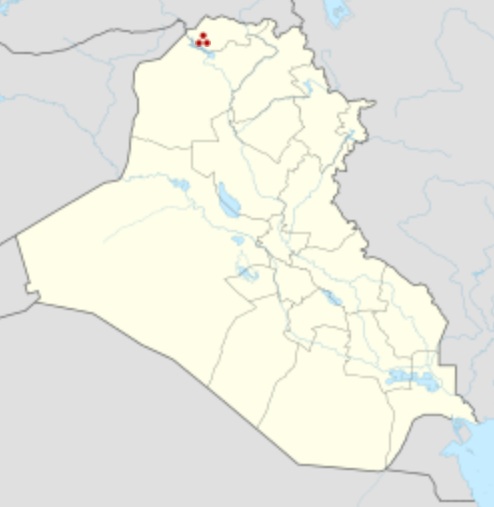
| MARDAMAN
Mardaman shown within Iraq Location : Bassetki, Dohuk Governorate, Iraq
Region : Mesopotamia
Coordinates : 36°57'31.6 N 42°43'17.4 E
Type : Settlement
History :
Founded : before 2250 BC
Periods : Akkadian Empire to Middle Assyrian Empire
Site notes :
Excavation dates : 2016 - present
Archaeologists : University of Tübingen
Mardaman (modern Tell Bassetki) was a northern Mesopotamian city that existed between ca.2200 and 1200 BC. It was uncovered in 2018 after translation of 92 cuneiform tablets. The tablets were discovered in summer 2017, near the Kurdish village of Bassetki, by a team of archaeologists. The team hailed from Tübingen's Institute for Ancient Near Eastern Studies, and were led by Prof. Dr. Peter Pfälzner of the University of Tübingen.
History
:
After his fall, the city became an independent kingdom under the Hurrian ruler Tish-ulme. A never dispatched letter, meant to have been sent to Tishe-ulme from Zimri-Lim, requested that he hand over the city to Zimri-Lim, who would give it to a local ruler loyal to him. The relations with Mari seem to have been hostile, also seen in Mardaman's support for Hadnum. The latter changed its alliance from Zimri-Lim to the city of Kurda. Haqba-Hammu, the ruler of Karana and ally of Mari, invaded Hadnum in retaliation, with 2,000 men. Even relief forces from Mardama could not prevent the capturing of five cities of Hadnum. Another letter in the Mari archives informed Zimri-Lim of the conquest of Mardaman by his allies Quarni-Lim of Andarig and Sharraya of northern Razama. Mardaman suffered another sacking by the Turukkaeans, a mountain people from the Zagros Mountains to the north, around 1769/1768.
During the Middle Assyrian Empire, the city had a final period of prosperity as a governor's seat between 1250 and 1200 BC. Clay tablets indicate the name of the governor, Assur-nasir and list some of his activities.
Archaeology
:
Source :
https://en.wikipedia.org/ |
